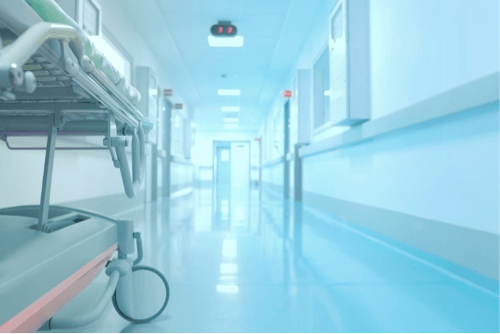Healthcare Facilities: Realistic Evacuation Plans Require Multiple Types of Equipment

If you operate a hospital or medical facility, emergency evacuation preparedness is a high priority. How can you claim to provide high quality patient care if there are any gaps in your emergency evacuation plans? Can you guarantee that no patient or individual will be left behind? Planning for all scenarios takes time and resources, but it’s the only way to ensure patient safety, should a disaster befall your facility.
Whether that disaster comes as a natural weather event, man-made accident, or something more terrifying—such as a terrorist attack or active shooter scenario—your facility is responsible for making sure every patient is evacuated appropriately in a timely manner. Having the right equipment is a crucial step in making sure you are ready for potentialities.
The Role of Evacuation Equipment
When considering how realistic your evacuation plan may be, the most critical components are equipment and manpower. You must make sure you have the right equipment, in the right quantities, and in the right locations. You must also ensure you have adequate manpower to operate such equipment. These figures are going to vary wildly from one facility to another, so collecting location-specific data is necessary for your assessment team to manage and purchase equipment.
What kind of equipment does your facility need? Your equipment inventory will likely include a combination of the three main types of evacuation devices: carry devices, wheeled devices, and medical sleds.
- Carry devices, such as those used by firefighters, should only be reserved for use by highly trained staff, as asking staff to lift and carry patients in an emergency can lead to other problems (and more injury). Such a means of evacuation should not be relied upon for widespread use.
- Rolling equipment, such as evacuation chairs are a form of wheelchair that has been customized to be lowered down stairs. Elevators cannot be counted on to operate properly in an emergency, of course, so standard wheelchairs can only be considered evacuation devices on ground level floors.
- Medical evacuation sleds, such as the Slyde, can be used to pull (rather than lift) non-ambulatory patients down stairways and across hallways and obstacles.
When considering the benefits and limitations of these three types of device, it’s important to note that they all may play a role in the safe evacuation of your patients. For example, rolling devices may have an excellent staff/patient ratio, but they are not ideal for getting over any obstacles that may lie in your path. A medical sled is great for pulling a patient over obstacles, but requires two or more staff to operate it. An evacuation chair may be convenient, but may not be as accessible as a wall-mounted evacuation sled, depending on the situation. You simple cannot predict what an emergency situation may look like, so having a carefully calculated combination of options is your best bet.
Fill the Potential Gaps in Your Evacuation Plans
If your facility relies heavily on evacuation chairs or other rolling devices, consider the benefits of adding a greater number of medical sleds, such as the Slyde. They include easy-to-follow instructions and can accommodate patients and equipment up to a weight load of 500 (Slyde) or 800 lbs. (Bariatric Slyde). They can also be stored and made visible for use by visitors and untrained staff. If a disaster scenario resulted in staff members being injured or immobilized, it would certainly be a plus to have more devices around that could be operated by a wider range of individuals.
Having the right equipment is just one piece of the puzzle, but it helps to know what the puzzle may look like! Have your risk assessment team carry out a number of projections for predicted vulnerabilities, for both natural and man-made disasters. Only by envisioning all the potential situations your facility may face can you get to a point where you can estimate your needs.
Contact us at 800-355-4628 and we’ll be happy to answer any of your questions about our evacuation device.
